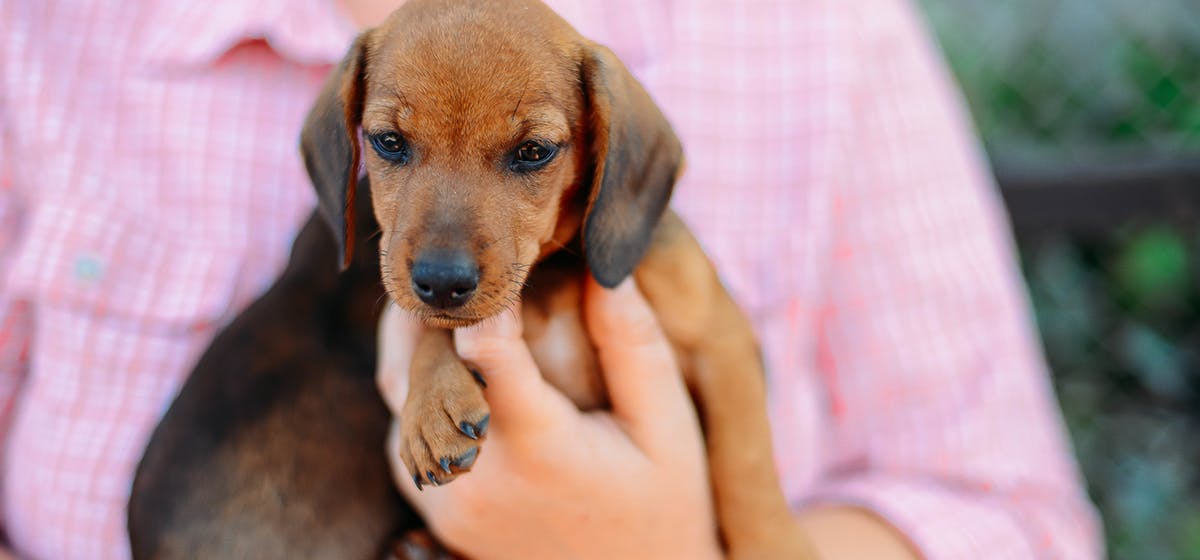Does Dog Know You Love Them? Exploring The Emotional Bond Between Humans And Dogs
Have you ever wondered if your dog truly understands the love you give them? The bond between humans and dogs is one of the most profound connections in the animal kingdom. Dogs have been our companions for thousands of years, and they possess an incredible ability to perceive and respond to human emotions. Understanding whether your dog knows you love them is more than just curiosity—it's about deepening the connection with your furry friend.
Studies have shown that dogs are incredibly perceptive creatures, capable of reading human facial expressions, tone of voice, and body language. These abilities allow them to form deep emotional bonds with their owners. By exploring this topic, we can better understand how dogs perceive our affection and how we can strengthen our relationship with them.
Whether you're a long-time dog owner or considering adopting a furry companion, knowing how dogs perceive love can enhance your experience as a pet parent. This article will delve into the science behind canine emotions, behavioral cues, and practical tips to ensure your dog feels loved and appreciated.
Read also:Discover Where To Find The Beloved Little Angels Cream
Table of Contents
- The Emotional Bond Between Humans and Dogs
- How Dogs Perceive Human Emotions
- The Science Behind Canine Emotions
- Behavioral Signs That Show Dogs Know You Love Them
- Subtle Signs of Affection
- Practical Tips to Show Your Dog You Love Them
- Ways to Enhance Interaction
- Common Mistakes When Showing Love to Dogs
- Things to Avoid
- Conclusion: Strengthening the Human-Dog Bond
The Emotional Bond Between Humans and Dogs
Humans and dogs share a unique bond that has evolved over thousands of years. This relationship is built on trust, loyalty, and mutual affection. Dogs are not just pets; they are family members who bring joy, comfort, and companionship to our lives. Understanding how dogs perceive love is essential for nurturing this bond.
Research has shown that dogs experience emotions similar to humans, including happiness, sadness, and even jealousy. This emotional depth allows them to form strong attachments to their owners. By recognizing and responding to these emotions, we can create a more harmonious and fulfilling relationship with our dogs.
One of the most fascinating aspects of the human-dog bond is the ability of dogs to read human emotions. They can sense when we're happy, sad, or stressed, and often respond with empathy and support. This intuitive understanding is what makes dogs such exceptional companions.
How Dogs Perceive Human Emotions
Dogs have an extraordinary ability to perceive human emotions through various cues, such as facial expressions, tone of voice, and body language. Studies have shown that dogs can recognize different emotions in human faces, similar to how humans do. This ability is a testament to their cognitive and emotional intelligence.
Facial Recognition in Dogs
One of the most remarkable skills dogs possess is their ability to recognize human faces. They can distinguish between happy and sad expressions, and often respond accordingly. For example, a dog might wag its tail and approach you when you smile, while avoiding you when you appear angry or upset.
Tone of Voice Matters
Dogs are highly sensitive to the tone of our voice. They can differentiate between a kind, soothing voice and a harsh, commanding one. Speaking to your dog in a gentle, loving tone can help them feel more secure and loved. Conversely, using a harsh tone can cause anxiety or fear in your dog.
Read also:Discovering The Rising Star Subhshree Sahu Biography Achievements And More
The Science Behind Canine Emotions
Understanding the science behind canine emotions can provide valuable insights into how dogs perceive love. Research has shown that dogs experience a range of emotions, including love, happiness, and even jealousy. These emotions are rooted in their biology and evolutionary history.
One study conducted by neuroscientist Gregory Berns found that dogs have a "love hormone" called oxytocin, which is released during positive interactions with their owners. This hormone plays a crucial role in strengthening the bond between humans and dogs.
The Role of Oxytocin in Dog-Human Relationships
Oxytocin is often referred to as the "love hormone" because it is associated with bonding and affection. When dogs interact positively with their owners, such as through petting or playing, their oxytocin levels increase. This biological response reinforces the emotional bond between humans and dogs.
Behavioral Signs That Show Dogs Know You Love Them
Dogs communicate their emotions through various behavioral signs. By paying attention to these cues, you can determine whether your dog knows you love them. Some common signs include:
- Wagging their tail when they see you
- Seeking physical contact, such as leaning against you
- Giving you "puppy eyes" as a form of communication
- Following you around the house
- Bringing you toys or other objects as a gesture of affection
These behaviors indicate that your dog feels a strong attachment to you and values your presence in their life.
Subtle Signs of Affection
In addition to obvious behavioral signs, dogs also exhibit subtle cues that show they know you love them. These small gestures might go unnoticed, but they carry significant meaning. Some examples include:
- Sleeping near you or in your bed
- Giving you their back as a sign of trust
- Yawning in response to your yawn (a sign of empathy)
- Leaning against you during stressful situations
These subtle signs demonstrate the deep emotional connection between humans and dogs.
Practical Tips to Show Your Dog You Love Them
While dogs naturally perceive our love through their intuitive abilities, there are practical ways to reinforce this connection. By incorporating these tips into your daily routine, you can ensure your dog feels loved and appreciated.
- Spend quality time together through walks, playtime, and training sessions
- Provide consistent care and attention to their physical and emotional needs
- Use positive reinforcement techniques to encourage good behavior
- Offer verbal praise and physical affection, such as petting and cuddling
These actions not only strengthen the bond between you and your dog but also contribute to their overall well-being.
Ways to Enhance Interaction
Enhancing your interaction with your dog can further deepen your emotional connection. Some effective strategies include:
- Engaging in interactive play, such as fetch or tug-of-war
- Teaching new tricks or commands to stimulate their mind
- Practicing mindfulness techniques, such as calm breathing exercises together
- Exploring new environments, such as hiking trails or dog parks
These activities provide opportunities for bonding and create lasting memories with your furry friend.
Common Mistakes When Showing Love to Dogs
Despite our best intentions, we may inadvertently make mistakes when showing love to our dogs. These errors can confuse or even distress our furry companions. Some common mistakes include:
- Using inconsistent commands or signals
- Ignoring their emotional cues or body language
- Overfeeding or spoiling them with excessive treats
- Leaving them alone for extended periods without proper care
Avoiding these mistakes ensures that your dog feels loved in a healthy and balanced way.
Things to Avoid
In addition to common mistakes, there are specific behaviors to avoid when interacting with your dog. These actions can harm the emotional bond and lead to negative consequences. Examples include:
- Punishing them physically or verbally for mistakes
- Ignoring their basic needs, such as food, water, and exercise
- Forcing them into uncomfortable situations or environments
- Not providing adequate mental stimulation or enrichment
By avoiding these behaviors, you can create a positive and supportive environment for your dog.
Conclusion: Strengthening the Human-Dog Bond
In conclusion, the bond between humans and dogs is a remarkable relationship built on trust, loyalty, and mutual affection. Understanding whether your dog knows you love them involves recognizing their emotional intelligence and responding to their needs. By incorporating practical tips and avoiding common mistakes, you can strengthen this connection and create a fulfilling relationship with your furry friend.
We encourage you to share your thoughts and experiences in the comments section below. Your insights can help other dog owners better understand and appreciate the unique bond we share with our canine companions. Additionally, feel free to explore other articles on our website for more valuable information on pet care and wellness.
References:
- Berns, G. S. (2013). How Dogs Love Us: A Neuroscientist and His Adopted Dog Decode the Canine Brain. New Harvest.
- Horowitz, A. (2010). Inside of a Dog: What Dogs See, Smell, and Know. Scribner.
- McGreevy, P. (2018). The Behavioral Biology of Dogs. CABI.


![Does My Dog Know I Love Him? [How To Show Dogs You Love Them] Oodle Life](https://www.oodlelife.com/wp-content/uploads/2022/02/does-my-dog-know-i-love-him-683x1024.jpg)